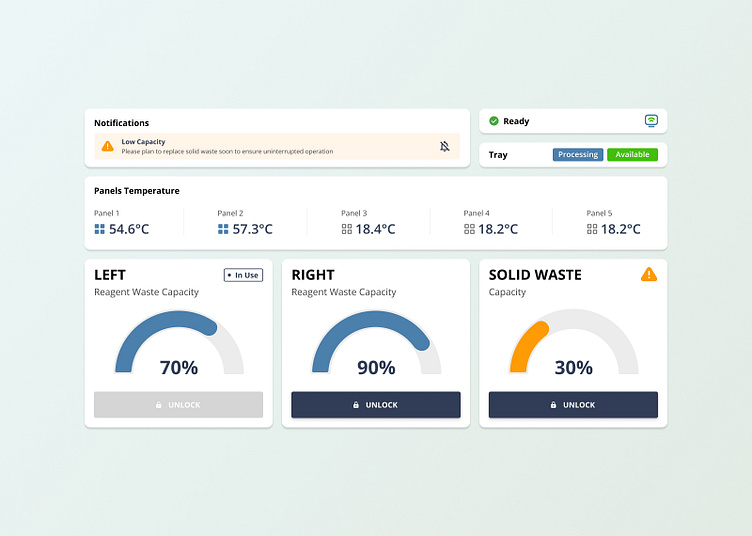Human-Machine Interface for Lab Instrument
Problem
Laboratory technicians using the instruments faced challenges in accessing critical information and navigating the processing mechanisms. Unintuitive interaction with instrument controls became a problem that hindered workflow efficiency. Errors were increased and could potentially compromise the integrity of laboratory results.
Key Question: How do lab technicians currently interact with the instrument and where do they encounter difficulties?
Why
Research revealed specific pain points:
• Information Scarcity: Key information regarding processing status, test availability, and waste levels was not readily visible, requiring technicians to navigate through multiple screens or rely on memory.
• Unclear Workflow: The instrument's operation wasn't always intuitive, leading to confusion about the correct sequence of actions.
• Risk of Accidental Actions: Certain actions, like unlocking waste containers, could be triggered accidentally, posing potential safety or operational risks.
Based on these findings, we determined that a redesigned home panel displaying all essential information and adjustments to interactive elements would significantly improve the user experience.
Solution
We implemented the following design improvements:
• Consolidated Home Panel: We redesigned the main interface to display all necessary information at a glance. This includes:
Processing status (e.g., "Ready," "Processing," "Available").
Waste levels (reagent and solid waste).
Panel temperatures.
Tray status.
Notifications.
• Enhanced Interaction Design: We refined the behavior of interactive elements to prevent accidental actions. For instance: The "Unlock" button for waste containers now requires a "press and hold" action, minimizing the risk of unintended release.
By consolidating critical information and improving interaction design, we aimed to:
• Improve Situational Awareness: Lab technicians can now easily monitor the instrument's status and available resources without navigating multiple screens.
• Enhance Workflow Efficiency: Clear information and intuitive controls streamline the operational process, saving time and reducing errors.
• Increase Safety: Unlock mechanism reduces the risk of accidental waste release, improving safety in the lab environment.
